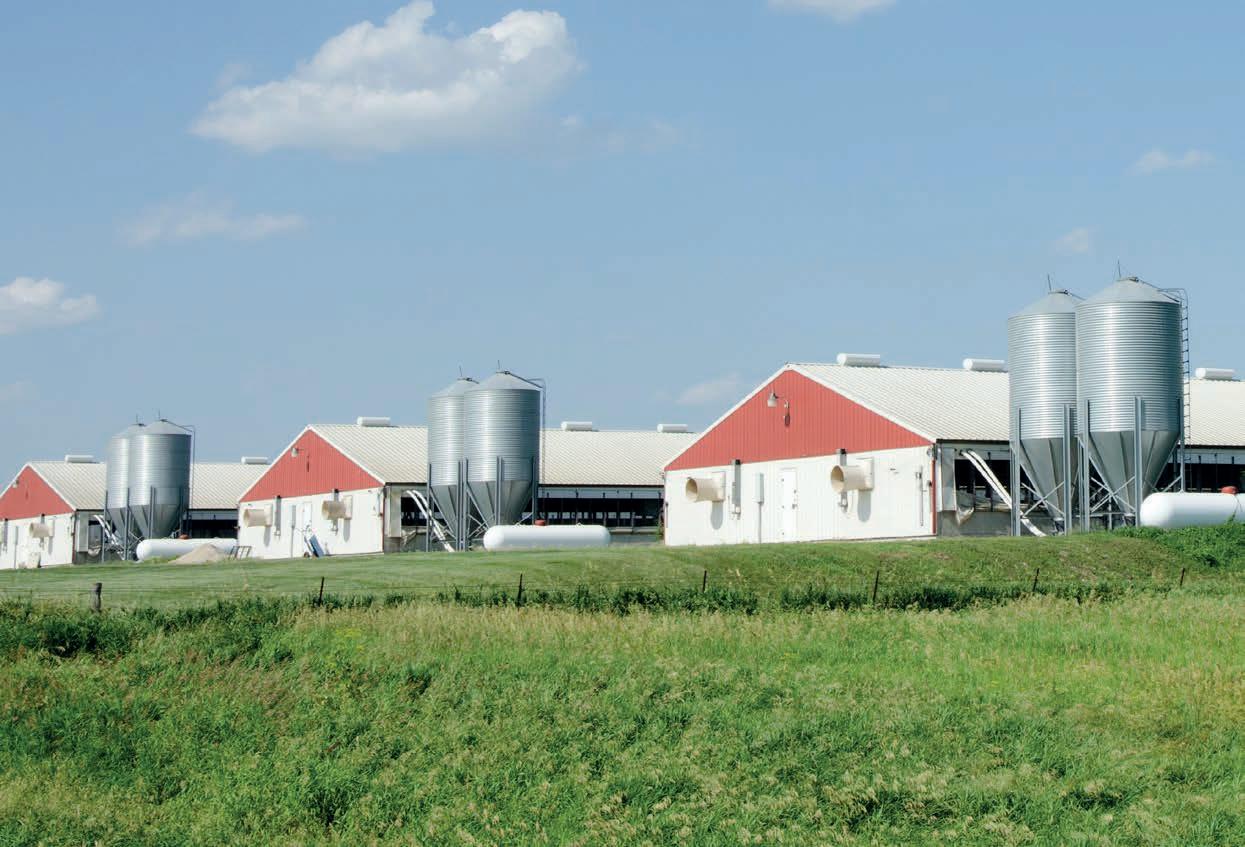FOCUS
The hose and drinking water hygiene: inhibiting the growth of biofilm Hygienically clean water is essential in poultry growing. Farmers report that cleaner drinking water increase their birds’ performance, with measurably better results, and that the effect on the birds’ health is also positive. The reduction of biofilm should therefore be an important goal. tracellular space, allowing the construction of a three-dimensional structure. Microorganisms are released and settle elsewhere. This process continues arbitrarily so that the microorganisms spread in the water line.
Risk factor PVC hose
Fig. 1: The PUR spiral hoses after installation in the broiler house.
Biofilms Livestock producers often use well water, which contains organic and inorganic suspended matter as well as a part of the soil’s natural microflora. Poultry managers therefore deal with a mixture of different algae, yeasts, fungi, bacteria and other microorganisms in the drinking water. Another source of contamination is the introduction of microorganisms when the birds touch the drinking nipple.
Timo Rothstein Big Dutchman
16
Microorganisms adhere to surfaces in water within just a few minutes. The microbes’ metabolic products are excreted into the ex-
- focus -
In a poultry growing house, an elevation difference of three to six meters must be compensated between the central water supply, which is suspended under the ceiling, and the drinker lines, which are laid close to the floor. Height adjustments during the batch and in the service period are therefore only possible when the line contains flexible parts. Considering the entire water supply system, these parts make up about three to four percent of the total system length. The standard component is a polyvinyl chloride (PVC) fabric hose with a plasticised inner surface, as used in private gardens. This choice seems obvious, since all water-carrying components from the water connection unit to the nipple drinker are made of this material. But: not all PVC materials are the same. The hygienic aspects of PVC-U (hard PVC), the material used in these components, differ considerably from those of PVC-P (soft PVC) hoses. PVC hoses are very popular because they are resistant to acids, lyes and many chemicals.













